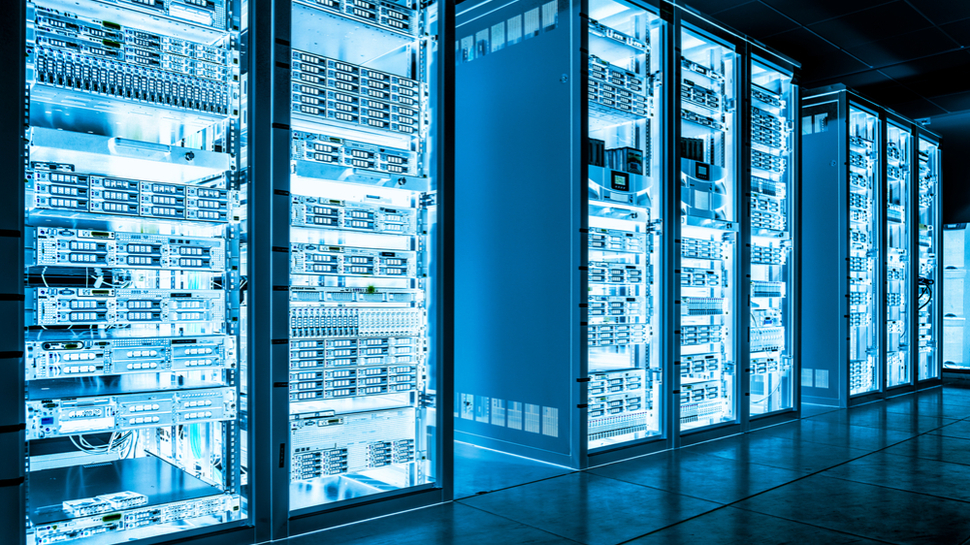Virtual machine migration – dispelling myths for enterprise IT teams
Debunking VM migration myths for efficient data centers

If enterprises are going to execute exceptional workload performance and IT services in today’s rapidly evolving landscape, there is a growing need to refresh legacy data center infrastructure used to run virtual machines (VMs).
As data-intensive workloads ramp up, so will the pressure on existing infrastructure performance and the footprint and power required to run data centers. Not to mention the building pressure to modernize and increase capacity to unlock the opportunities that Artificial Intelligence (AI) and Machine Learning (ML) present.
Within the context of this changing landscape, sticking to legacy infrastructure will likely cause modern workloads to run slower, consume more energy, and become more susceptible to security risks. After all, the average server is already between 3-5 years old.
Corporate VP for Architecture and Strategy of the Data Center and Embedded Solutions at AMD.
Don’t settle for good enough
Despite the extensive laundry list of reasons to modernize, CIOs and IT decision-makers are resistant toward VM migration.
This hesitancy and wish to avoid anticipated pain points can cause IT departments to settle for good enough, despite the potential performance and efficiency improvements that come with modernization.
By showcasing the benefits and value of VM migration, and debunking myths surrounding the process, enterprises can overcome the obstacle standing in the way of more efficient data centers; a necessity to keep up with compute demands and the ever-changing technology landscape.
Myth: Cold migrations require a reboot, with no workarounds available to avoid application downtime
Reality:
Sign up to the TechRadar Pro newsletter to get all the top news, opinion, features and guidance your business needs to succeed!
Rebooting systems is an inevitable part of migrating VMs between hardware architectures. But it is also true that reboots are a standard practice when applying operating systems, applications, and security patches.
Migration doesn’t have to be viewed any differently from a routine patch where organizations make use of available application environments built for redundancy. These configurations mean applications can remain available when performing routine maintenance and critical updates.
Ultimately, IT teams can rest assured that there is an established workflow that IT professionals have used for years which can be used when migrating VMs: Power down systems, perform operations and updates, power up systems, and verify completion and proper operation.
Myth: Live migrations within a vendor’s product line provide easy upgrades and access to new processor advancements
Reality:
It is possible to migrate live when you don’t change vendors. But, there are costs to be considered that can limit you in the short and long term.
For example, when you live migrate to new servers, VMs have no choice but to emulate your old hardware on new servers. This means missing new instructions that could improve performance, up-to-date security features, and bug fixes – all of which rank among the main reasons you would choose to migrate and modernize your infrastructure in the first place.
Because performance is impacted when VMs, applications, and workloads don’t run in an environment where every new CPU feature is available, what may feel like a shortcut – migrating live within a vendor’s product line – likely isn’t in practice.
Especially when cold migrating 40 VMs can be done in less than 30 minutes, which was achieved in tests conducted by Prowess Consulting.
Myth: Migration requires a lengthy outage that disrupts workload operation
Reality:
Simply put, you don’t need to perform a migration in one step. Highly available configurations include functionality tiers so you can migrate different sections of your system over time using the same process as when upgrading other elements of your infrastructure.
Since IT teams have the power to decide which layers are migrated, and when, organizations can retain that all-important element of control. Working in collaboration across the business, you can decide what is migrated and when, limiting impact or user and business operation, causing minimal disruption.
An open-source tool like the VMware® Architecture Migration Tool (VAMT) makes this process even simpler with features like ‘Change window support,’ where you can stage which machines migrate first and which follow to perform an entire migration of multi-tier architecture with virtually zero downtime.
Efficient migration – efficient data centers
Enterprises are at a point where they must embrace the evolution of their data centers to keep up with the compute requirements of AI and ML. That is why it is so important to dispel the myths surrounding virtual machine migration, and show it is a crucial step in the data center modernization journey.
Instead of being seen as costly and complicated, VM migration can be navigated with confidence by IT teams, harnessing established workflows and leveraging innovative tools.
The rewards are clear. Not only does VM migration pave the way for seamless integration of cutting-edge technologies, like AI and ML, but it also optimizes resource utilization and fortifies defenses at an important time.
We've featured the best IT infrastructure management service.
This article was produced as part of TechRadarPro's Expert Insights channel where we feature the best and brightest minds in the technology industry today. The views expressed here are those of the author and are not necessarily those of TechRadarPro or Future plc. If you are interested in contributing find out more here: https://www.techradar.com/news/submit-your-story-to-techradar-pro
Robert Hormuth is the Corporate Vice President, Architecture and Strategy of the Data Center and Embedded Solutions (Server, Data Center GPUs, and Embedded product lines) at AMD.